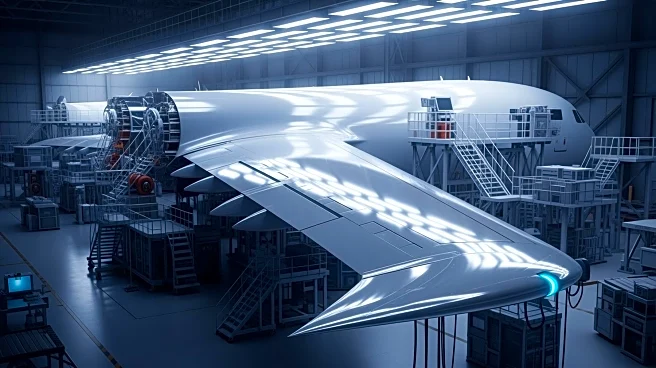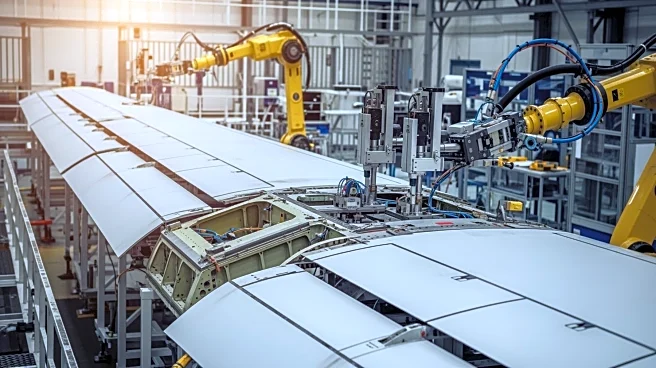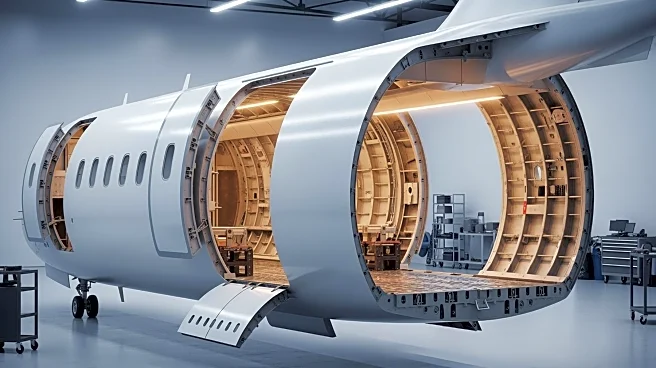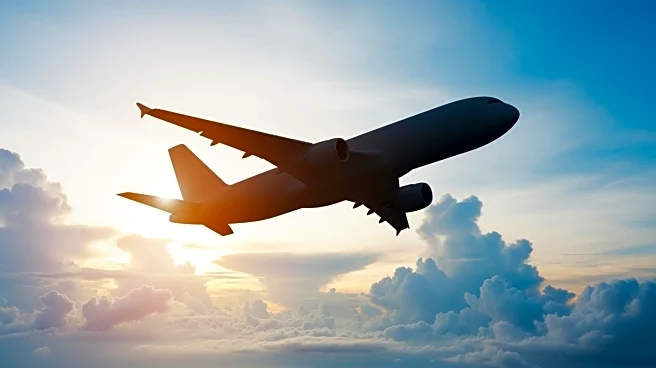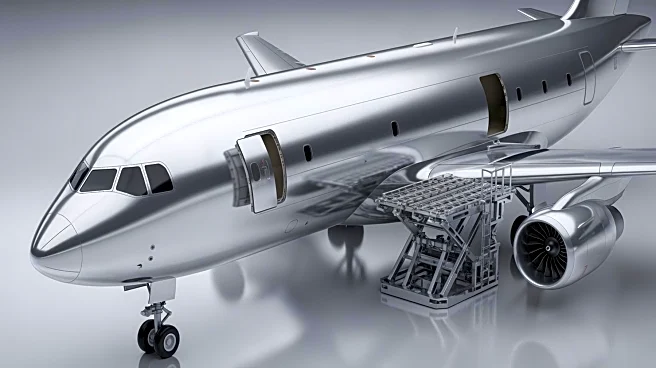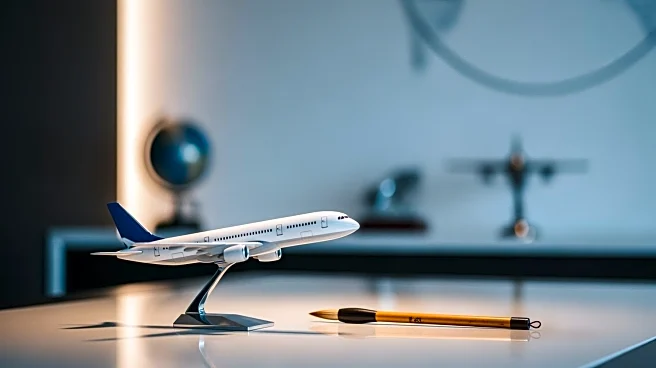What's Happening?
Boeing Commercial Airplanes has commenced the wing assembly for the Boeing 777-8 Freighter at its Everett, Washington facility. This marks a significant step in the development of what is anticipated to be the world's largest and most capable twin-engine
cargo aircraft. The 777-8 Freighter, part of Boeing's next-generation 777X family, is designed to set new standards in air cargo transport efficiency and performance. It boasts a structural payload capacity exceeding 118 tonnes and a range of over 4,400 nautical miles. The aircraft is engineered to meet the growing global demand for air freight, driven by the rise in e-commerce and express delivery services. Boeing projects a 70% increase in worldwide air freight traffic over the next two decades. The 777-8 Freighter's advanced design includes features such as folding wingtips and composite materials, which enhance aerodynamic performance and reduce fuel consumption and emissions.
Why It's Important?
The introduction of the Boeing 777-8 Freighter is poised to significantly impact the air cargo industry by offering enhanced efficiency and sustainability. As global cargo demand surges, this aircraft provides a solution for carriers looking to expand their long-haul networks while minimizing environmental impact. The 777-8 Freighter's ability to carry large payloads over long distances with reduced emissions positions it as a critical asset for major cargo hubs worldwide. This development aligns with the industry's shift towards more sustainable operations, as airlines seek to lower their carbon footprint. Additionally, Boeing's expansion of its cargo aircraft portfolio strengthens its market position, offering a comprehensive range of solutions for various cargo needs. The 777-8 Freighter's introduction could lead to increased competitiveness among airlines, potentially driving further innovation and efficiency improvements in the sector.
What's Next?
As Boeing progresses with the 777-8 Freighter's development, the focus will likely shift to completing the assembly and testing phases. Airlines and cargo operators may begin evaluating the aircraft for integration into their fleets, considering its potential to enhance operational efficiency and reduce costs. Regulatory approvals and certifications will be crucial steps before the aircraft can enter service. The industry will be watching closely to see how the 777-8 Freighter performs in real-world operations and whether it meets the ambitious efficiency and sustainability targets set by Boeing. The success of this aircraft could influence future design and development strategies within the aerospace sector, particularly in the context of environmental sustainability and economic viability.
Beyond the Headlines
The 777-8 Freighter's development highlights broader trends in the aerospace industry, including the push for greener technologies and the adaptation to changing market demands. The aircraft's design reflects a commitment to reducing the environmental impact of air cargo operations, a priority for both manufacturers and operators. This shift towards sustainability is likely to influence regulatory frameworks and industry standards, encouraging further innovation in aircraft design and manufacturing processes. Additionally, the 777-8 Freighter's capabilities may drive changes in global logistics strategies, as companies seek to optimize their supply chains with more efficient and flexible transportation options.
